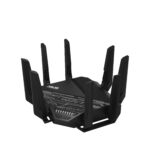CMOS image sensors are small electronic devices that take in light and create digital pictures. They are commonly used in phones, computers, and digital cameras. These sensors use special technology to produce clear, bright images while using less power than older types of sensors. In the world of digital imaging, CMOS image sensors have become very important. These versatile and cost-effective chips capture and transform light into the images and videos we see every day.
This page looks into how CMOS image sensors work, their advantages, disadvantages, and various uses, shedding light on the technology behind our visual world. CMOS sensors have small light-catching spots called pixels. Each pixel captures light and changes it into an electric signal. The sensor then turns these signals into data that makes up a digital photo.
CMOS sensors are not just for taking pictures; they can also help cameras focus and adjust for different lighting. Many devices use CMOS image sensors. They work well in small gadgets because they use little power and don’t cost much to make. As the sensors improve, they can take sharper photos in all kinds of light, which benefits the cameras in many things we use every day.

Illuminating Digital Imaging: Unveiling the World of CMOS Image Sensors
What is a CMOS Image Sensor?
A CMOS (Complementary Metal-Oxide-Semiconductor) image sensor is a type of electronic chip that converts light into digital signals. It consists of millions of tiny light-sensitive photodiodes arranged in a grid, each capturing light intensity and converting it into an electrical charge. This charge is then processed and converted into a digital image.
How CMOS Image Sensors Work
When light enters the camera lens, it falls on the CMOS sensor. Each photodiode in the sensor generates an electrical charge proportional to the light’s intensity. This charge is amplified and converted into a digital signal, which is then processed to form the final image.
Advantages of CMOS Image Sensors
CMOS image sensors offer several advantages over other types of image sensors:
- Lower power consumption: CMOS sensors use less power than CCD sensors, making them ideal for battery-powered devices like smartphones and digital cameras.
- Lower cost: CMOS sensors are generally cheaper to manufacture than CCD sensors.
- Higher frame rates: CMOS sensors can capture images at higher frame rates, making them suitable for video recording and action photography.
- Integration of functions: CMOS sensors can integrate additional functions on the same chip, such as image processing and analog-to-digital conversion.

Image Credit: https://www.flickr.com/photos/40401117@N06/4781990919
Disadvantages of CMOS Image Sensors
- Lower sensitivity: CMOS sensors are generally less sensitive to light than CCD sensors, requiring more light to capture a good image.
- Higher noise: CMOS sensors tend to produce more noise than CCD sensors, especially in low-light conditions.
- Rolling shutter effect: CMOS sensors with rolling shutter may exhibit distortion in fast-moving objects or when the camera is panning.
Applications of CMOS Image Sensors
CMOS image sensors are used in various applications, including:
- Digital cameras: Most modern digital cameras, from smartphones to DSLRs, use CMOS image sensors.
- Webcams: CMOS sensors are used in webcams for video conferencing and live streaming.
- Medical imaging: CMOS sensors are used in various medical imaging devices like endoscopes and X-ray machines.
- Automotive cameras: CMOS sensors are used in backup cameras, lane departure warning systems, and other automotive safety features.
Types of CMOS Image Sensors
| Type | Description | Applications |
|---|---|---|
| Front-illuminated CMOS (FSI) | Light falls directly on the photodiodes. | Most common type, used in various consumer and industrial applications. |
| Back-illuminated CMOS (BSI) | Light falls on the backside of the sensor, increasing light-gathering efficiency. | High-end cameras, low-light applications. |
| Global shutter CMOS | All pixels are exposed and read out simultaneously. | Industrial applications, high-speed imaging. |
| Rolling shutter CMOS | Pixels are exposed and read out sequentially. | Most consumer cameras, video recording. |
Key Takeaways
- CMOS sensors turn light into digital images using less power than other sensors
- These sensors have many uses in phones, computers, and cameras
- CMOS technology keeps improving, making better pictures possible in more devices
Fundamentals of CMOS Technology
CMOS technology forms the basis for modern image sensors. It uses silicon-based circuits to capture and process light. CMOS sensors have key parts that work together to turn light into digital signals.
Key Components and Operation
CMOS sensors have pixels made of photodiodes and transistors. Photodiodes catch light and make electrons. Transistors then move these electrons and turn them into electric signals.
The main parts of a CMOS pixel are:
- Photodiode: Turns light into electrons
- Transfer gate: Moves electrons from the photodiode
- Floating diffusion: Holds electrons briefly
- Reset transistor: Clears out old signals
- Source follower: Changes electron charge to voltage
- Row select transistor: Picks which pixel to read
Light hits the photodiode. It makes electrons. The transfer gate opens and moves electrons to the floating diffusion. The source follower reads this charge as a voltage. The reset transistor then clears the pixel for the next image.
CMOS vs CCD Sensors
CMOS and CCD sensors both capture images but work differently.
CMOS sensors:
- Read each pixel right away
- Use less power
- Can be made with standard chip-making methods
- Often have more noise in the image
CCD sensors:
- Move charge across the chip to read it
- Use more power
- Need special manufacturing
- Often have less noise
CMOS sensors are now more common in cameras and phones. They’re cheaper to make and use less battery. But some high-end cameras still use CCDs for their image quality.
Advancements in CMOS Sensors
CMOS sensors keep getting better. New designs make clearer pictures with less noise.
Recent improvements include:
- Backside illumination: Flips the sensor to catch more light
- Stacked sensors: Put memory and processing right on the chip
- Global shutter: Captures the whole image at once, stopping motion blur
- Larger pixels: Catch more light for better low-light photos
These changes help CMOS sensors work better in different lighting. They also make cameras faster and more power-efficient.
Quantum efficiency has gone up too. This means sensors turn more light into useful signals. Better microlenses on top of pixels help focus light where it’s needed.
Applications and Market Trends
CMOS image sensors are used in many devices and industries. They help capture high-quality images and video in phones, cameras, cars, and factories. The market for these sensors is growing fast as more products need better picture-taking abilities.
Photography and Videography
CMOS sensors have changed how we take photos and videos. They’re in most digital cameras now. These sensors let cameras take sharp pictures even when it’s dark. They also allow for fast shooting and high-resolution video.
Many pro photographers use cameras with CMOS sensors. The sensors can capture a wide range of light and color. This helps create more realistic images. Video makers like CMOS sensors too. The sensors let them shoot smooth, clear footage at high frame rates.
Camera phones also use CMOS sensors. This has made it easy for anyone to take good photos. Phone makers keep improving their sensors to compete with each other.
Industrial and Security Applications
CMOS sensors are important for many businesses and safety systems. Factories use them to check product quality. The sensors can spot tiny flaws that human eyes might miss.
Security cameras often have CMOS sensors. They work well in different lighting conditions. This helps capture clear footage day and night. Many traffic cameras and car safety systems use these sensors too.
Doctors and scientists use CMOS sensors in their work. The sensors help them see small details in medical scans and lab tests. This can lead to better diagnoses and research findings.
Consumer Electronics and Mobile Devices
CMOS sensors are crucial components in many of the everyday gadgets we use. Smartphones are the primary users of these sensors, with each new phone model striving to feature a better camera than its predecessor. Additionally, tablets, laptops, and smart home devices also utilize CMOS sensors. These sensors can be found in various devices such as video doorbells, baby monitors, and even some smart fridges. They enable devices to “see” and respond to their surroundings. As these sensors become smaller and more powerful, companies are able to integrate better cameras into thinner devices. Furthermore, this advancement also contributes to the improvement of features like face recognition and augmented reality in phones and other gadgets.
Frequently Asked Questions
CMOS image sensors are key parts of digital cameras. They turn light into digital images. Let’s look at some common questions about these sensors.
How does a CMOS image sensor work?
CMOS sensors have tiny light-capturing units called pixels. When light hits a pixel, it makes an electric charge. The sensor then turns this charge into a digital signal. This process happens for each pixel to create a full image.
What factors influence the cost of CMOS image sensors?
Size is a big factor in sensor cost. Larger sensors cost more. The number of pixels also affects price. More pixels mean higher costs. Special features like better low-light performance can increase the price too.
Can you explain the design process for CMOS image sensors?
Engineers start by setting goals for the sensor’s performance. They then design the pixel structure and circuits. Next, they test and refine the design. The final step is making the sensor in a factory.
What are the differences between CMOS sensors and CCD sensors?
CMOS sensors use less power than CCDs. They’re also faster at reading out images. CCDs often have less noise in their images. But CMOS sensors are cheaper to make and more common now.
Are CMOS sensors present in all digital cameras?
Most modern digital cameras use CMOS sensors. This includes phones, DSLRs, and mirrorless cameras. Some older or special cameras might still use CCD sensors. But CMOS is now the standard for most devices.
What advantages do CMOS sensors offer in imaging technology?
CMOS sensors are very power-efficient. They can be made smaller than other types. This helps in making compact cameras. CMOS sensors also allow for fast image readout. This is good for video and burst shooting.







